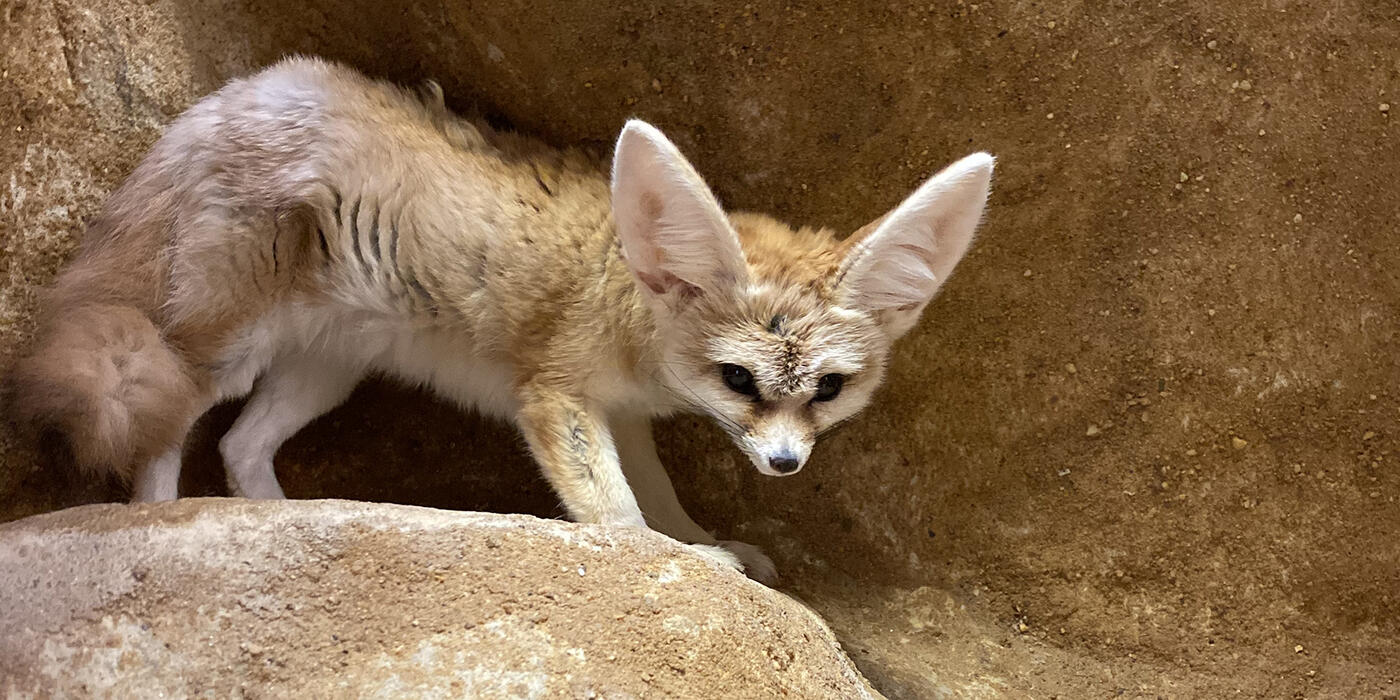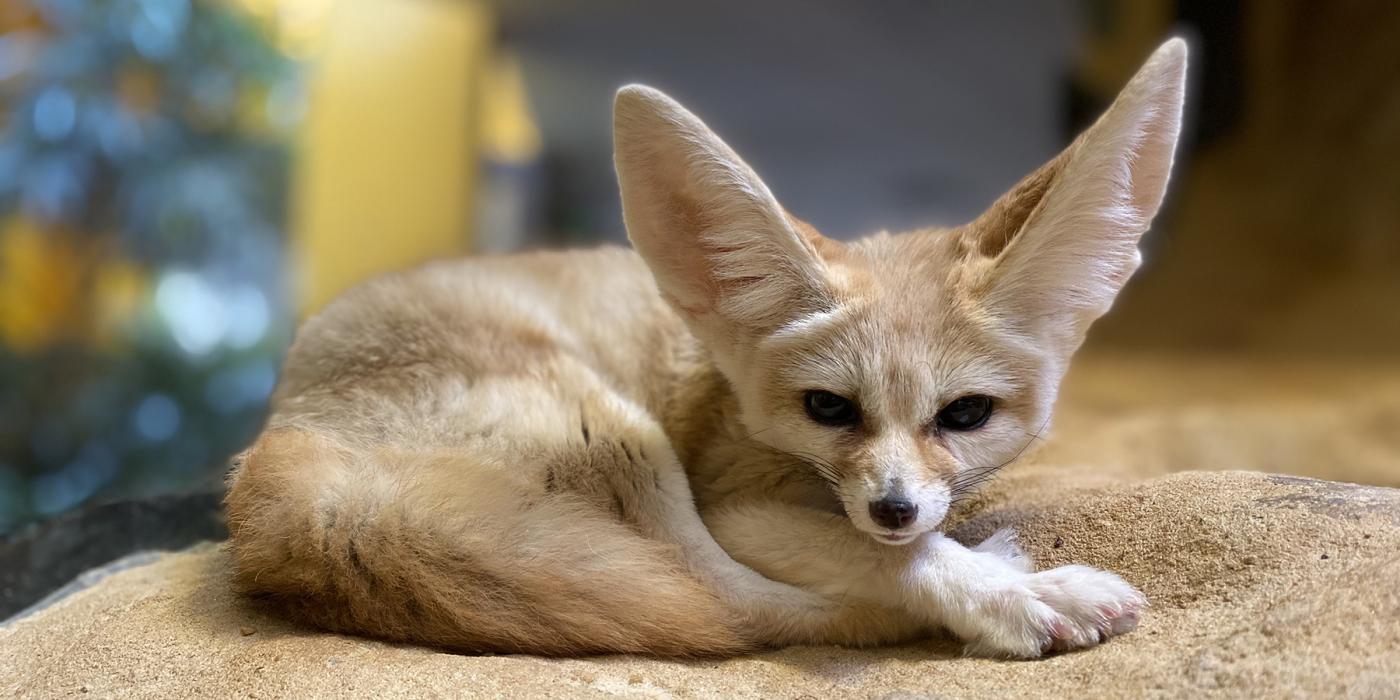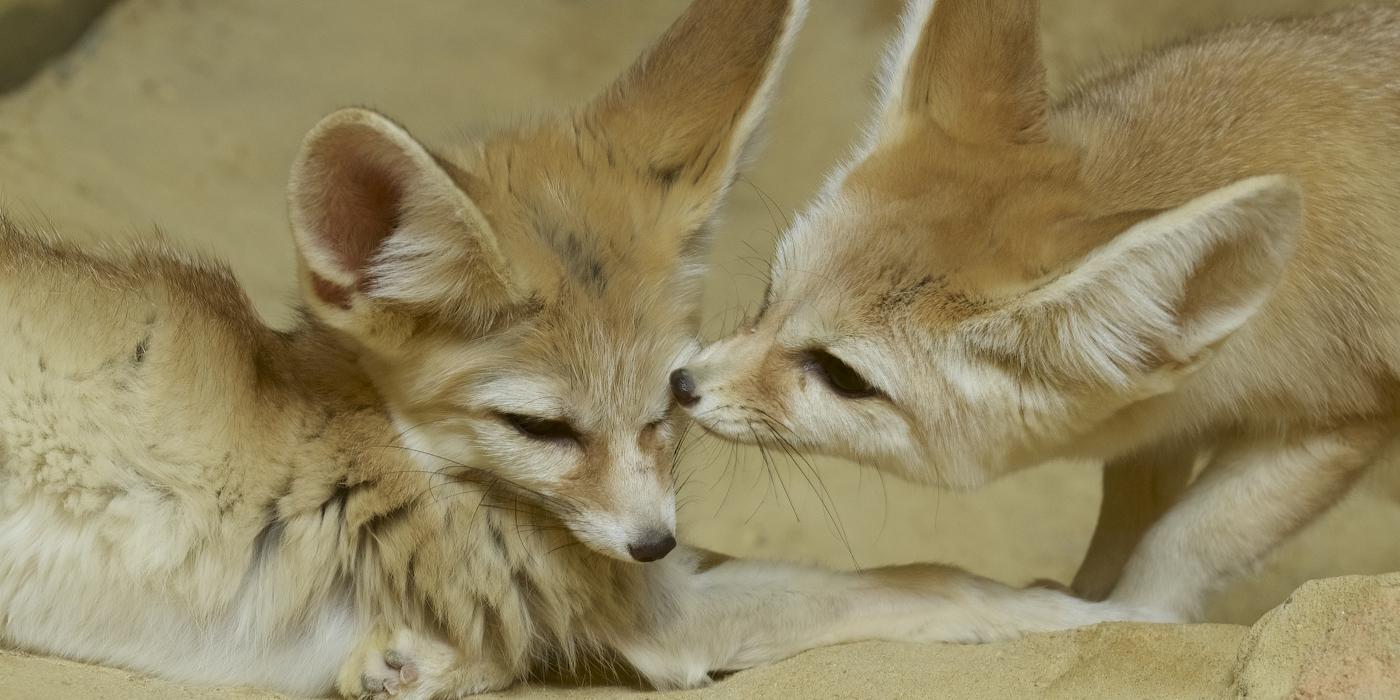How to Care for Fennec Foxes
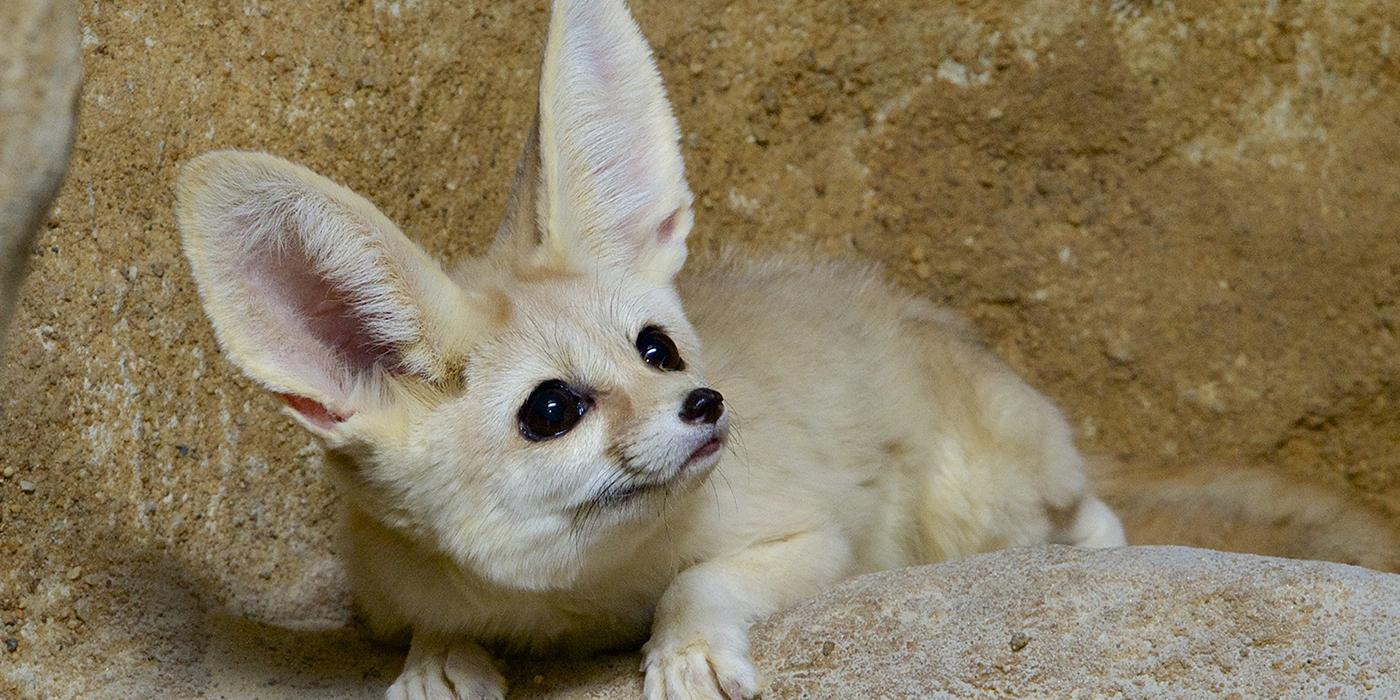
The summer sun is turning up the heat at Smithsonian’s National Zoo and Conservation Biology Institute. Many of the Zoo’s animals are built for extreme temperatures, including the fennec fox! Dip into the air-conditioned Small Mammal House to escape the heat and learn how animal keeper Maria Montgomery cares for these desert dwelling foxes.
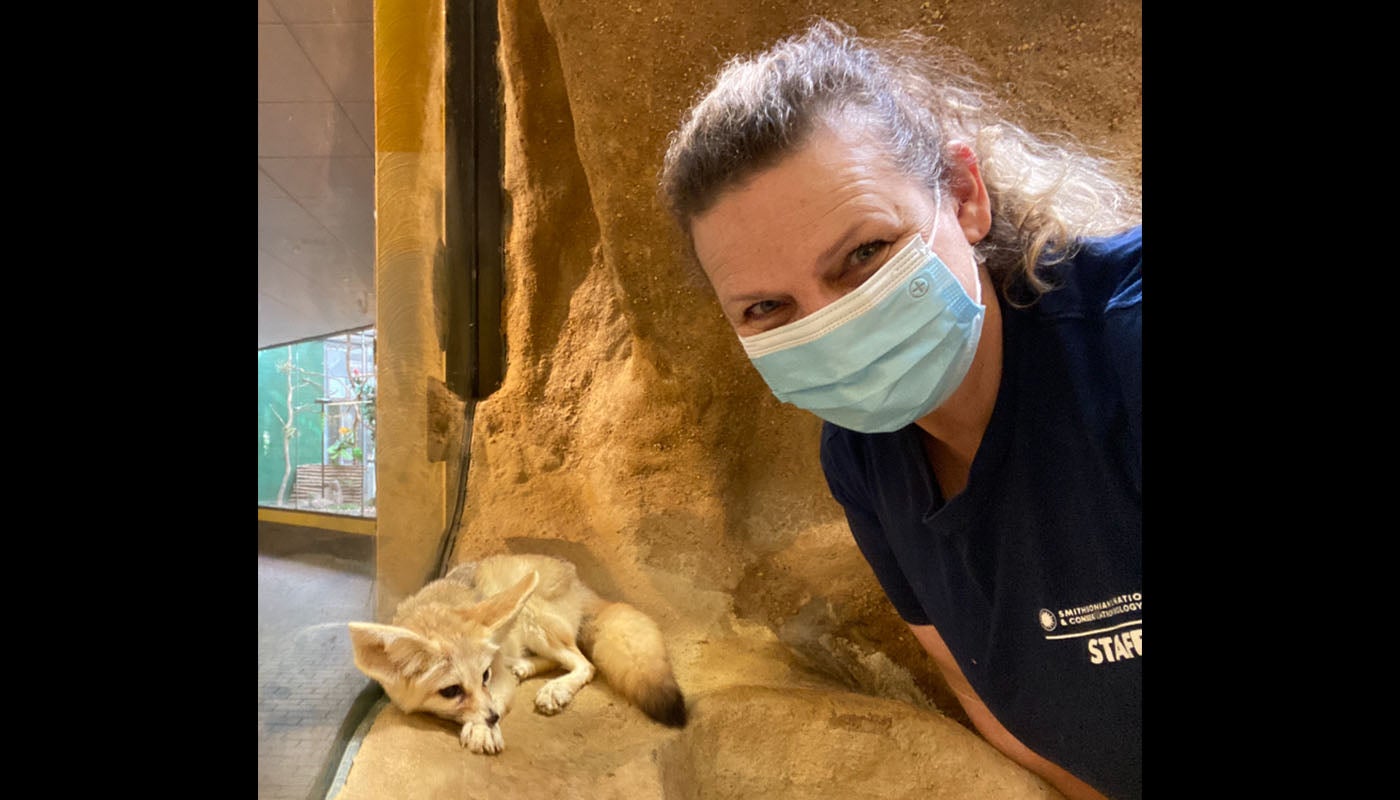
Maria is very passionate about working with the animals in the Small Mammal House, including the fennec foxes!
One of the first animals visitors see in the Small Mammal House is a tiny tan fox with large ears. Fennec foxes are the smallest member of the canid family, weighing around two or three pounds. Size aside, these foxes hold a large space in my heart.
Catch an up-close look at the Zoo 13-year-old female fennec fox, Daisy, in this special encounter:
As I mentioned in the video, fennec foxes are native to a large span of the Sahara Desert in North Africa, where the environment is very sandy and arid. To mimic the conditions they would experience in the desert, our fennec fox habitat has a sandy substrate (ground cover).
The habitat is also designed to look like it’s underground. There are a couple of platforms and hidden spaces to give our foxes a sense of burrowing. In the wild, fennec foxes sleep in burrows during the day to avoid the heat. They usually dig their own burrows, which can include a series of tunnels reaching up to 32 feet long! The dens also have multiple entrances and exits to provide the fox with a safe escape if needed.
Fennec foxes are nocturnal, but visitors may catch the Zoo’s two resident foxes, Daisy and male Barkley, awake in the morning. They are curious, playful and incredibly smart animals. They also seem to enjoy engaging with their keepers more than many other animals. One role of being a keeper is to provide proper stimulation and support for each of our animals’ emotional and physical wellbeing. Husbandry training sessions are one of the best things we can offer the fennec foxes. These voluntary trainings give them greater choice and control over how they spend their time.
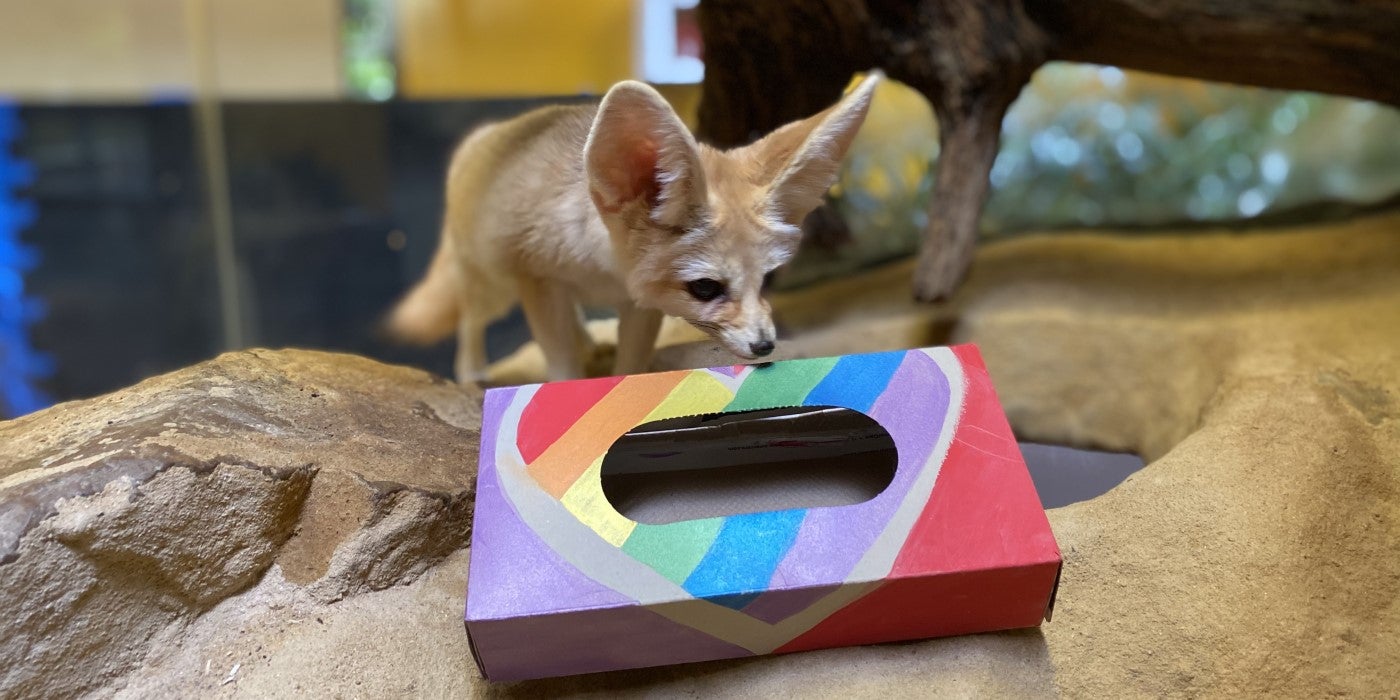
Enrichment is another way we can provide animals proper stimulation and encourage them to use their natural behaviors. For International Equality Day in 2021, Daisy received a ball pit and rainbow painted boxes (pictured) containing her diet. Both items allowed her to listen and dig for her food!
Both of our fennec foxes are target trained, meaning they will follow a ball on the end of a dowel to a desired location. This allows us to position each fox so we can look them over for any bumps, scrapes or abnormalities. They also will voluntarily move from one exhibit to another when asked. There are several reasons we may need them in a certain area, but the most common are for feedings and medical treatments.
Finally, the fennec foxes are scale trained; they will voluntarily step onto a scale so we can obtain their weights as needed. After they successfully perform the desired behavior, we reward them with a favorite treat! Our foxes seem to like mealworms, crickets and other insects best.
In addition to helping us provide the best husbandry and medical care for the fennec foxes, training sessions allow us to bond with each fox individually. Both of our fennec foxes have big personalities. Daisy seems to enjoy spending time with her keepers more than other foxes we have had.
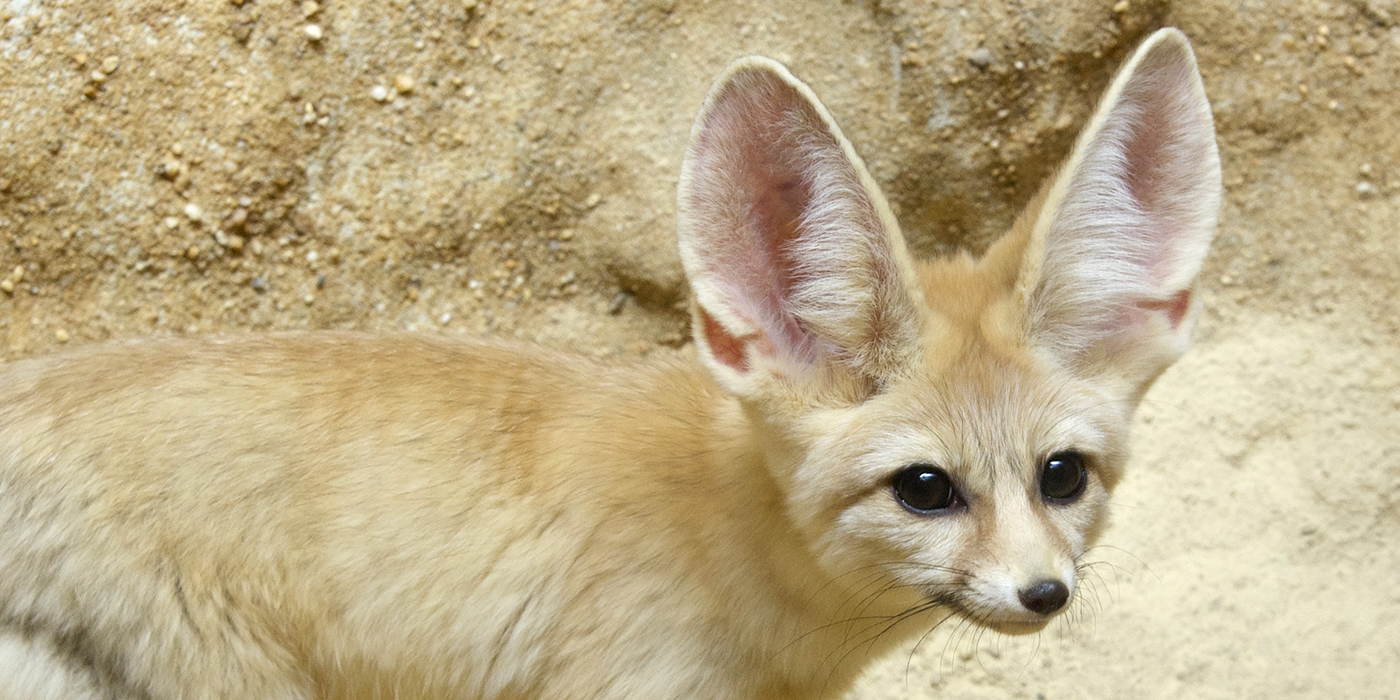
Fennec foxes are the palest of all foxes. Their light colored fur gives them excellent camouflage!
Fennec foxes may be cute, but they do not make good pets. In fact, in many jurisdictions, it is illegal. They are territorial, difficult to house train and can be destructive. Not to mention the specialized diet, health care and socialization with other fennec foxes they need to have a high quality of life. But most people don’t realize the level of commitment it takes to properly care for these animals until it is too late.
If fennec foxes have piqued your interest in animals, I encourage you to visit Daisy and Barkley at the Small Mammal House. If you aspire to work with this species, be prepared to fall in love! I have so much fun working with our fennec foxes. They have a lot of energy and learn quickly – they certainly keep me on my toes!
Visit Daisy and Barkley in the Small Mammal House when you plan your visit today!
Looking to cool off with more stories from our keepers? Check out a variety of stories from all over Smithsonian’s National Zoo and Conservation Biology Institute here.
Related Species:
